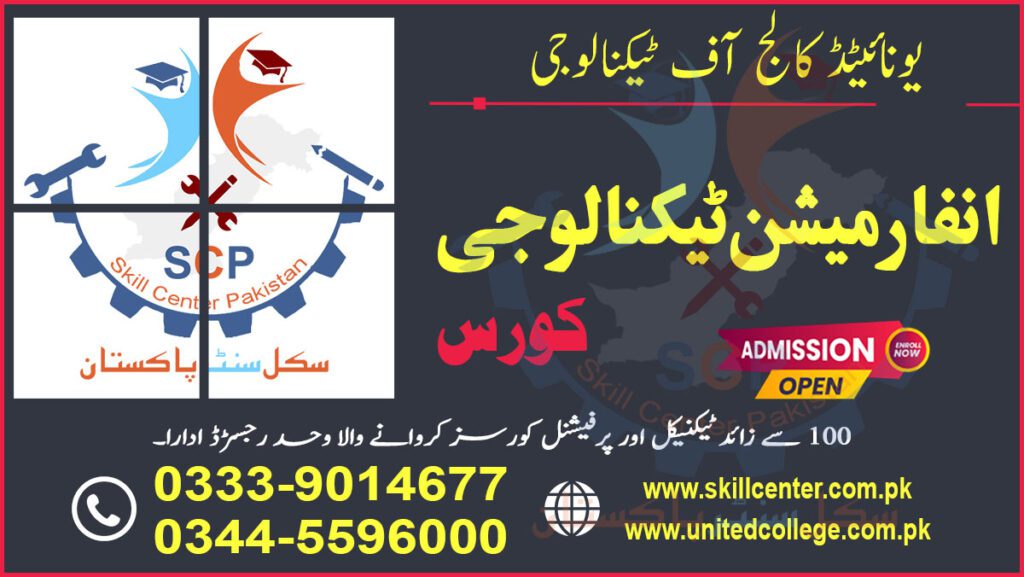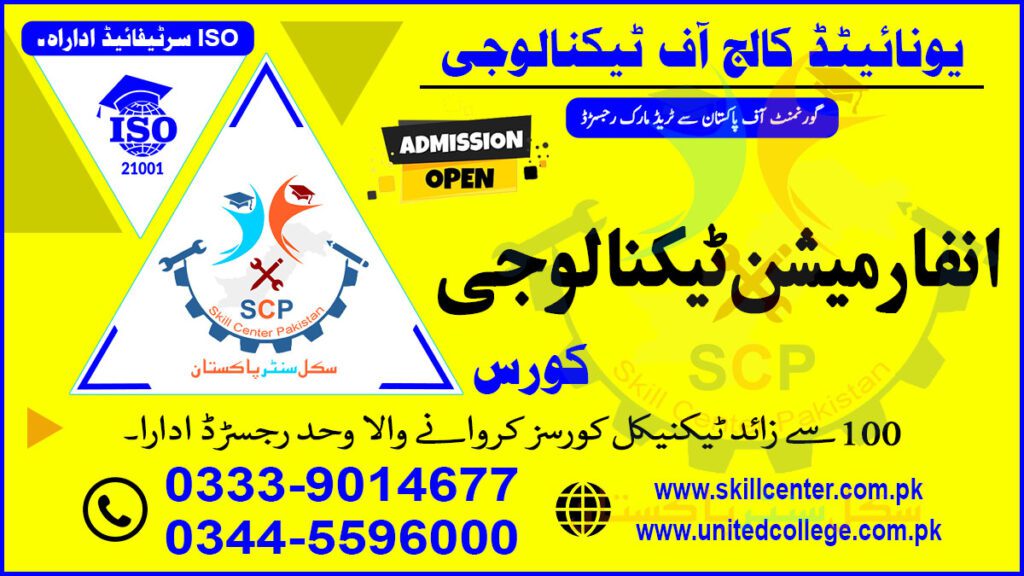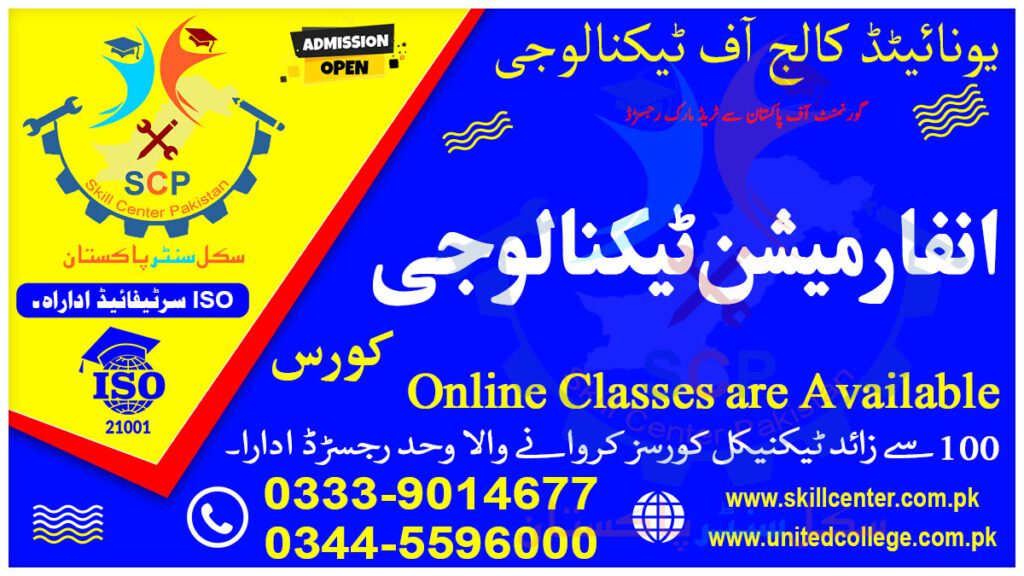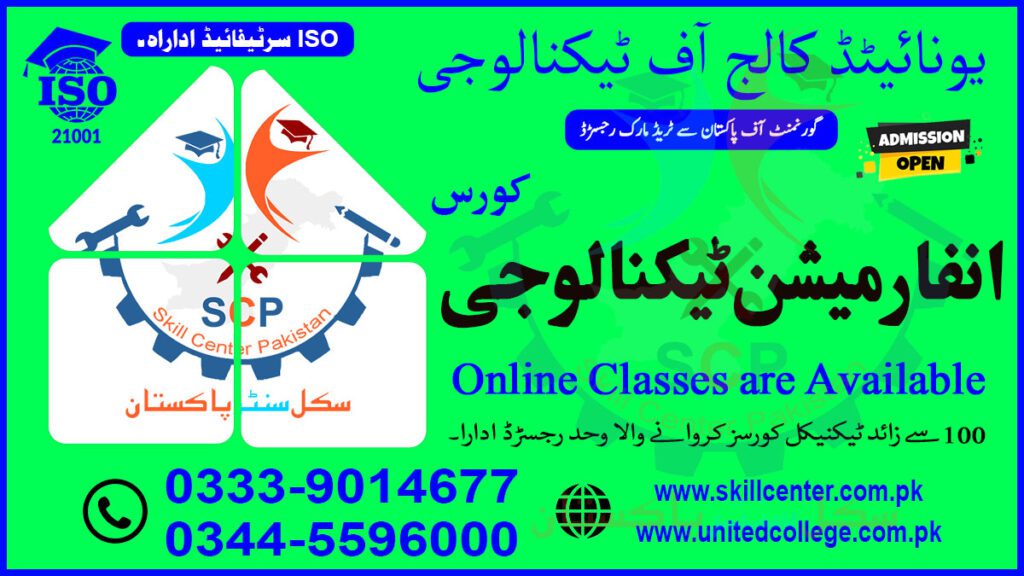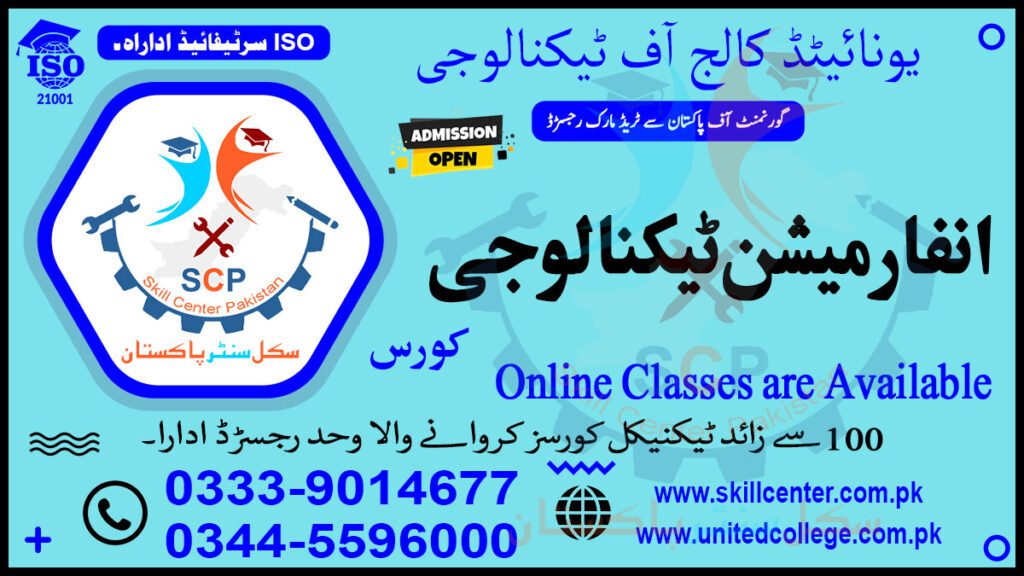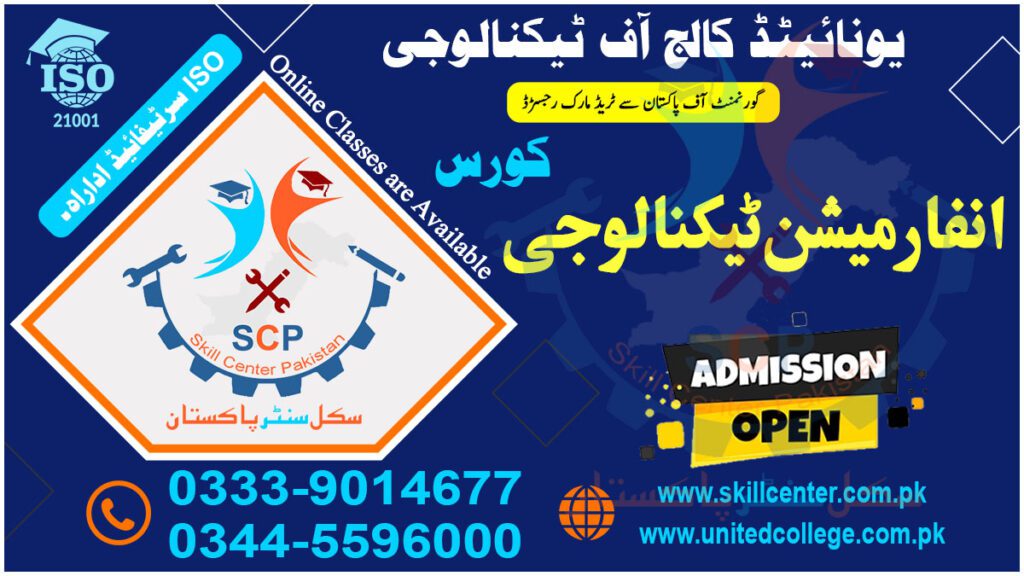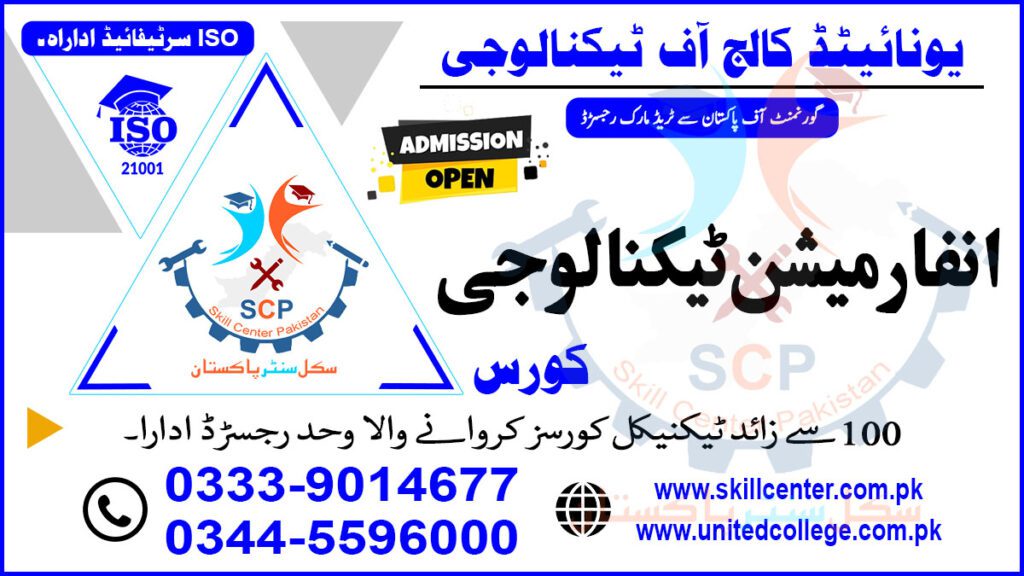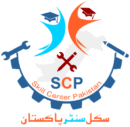





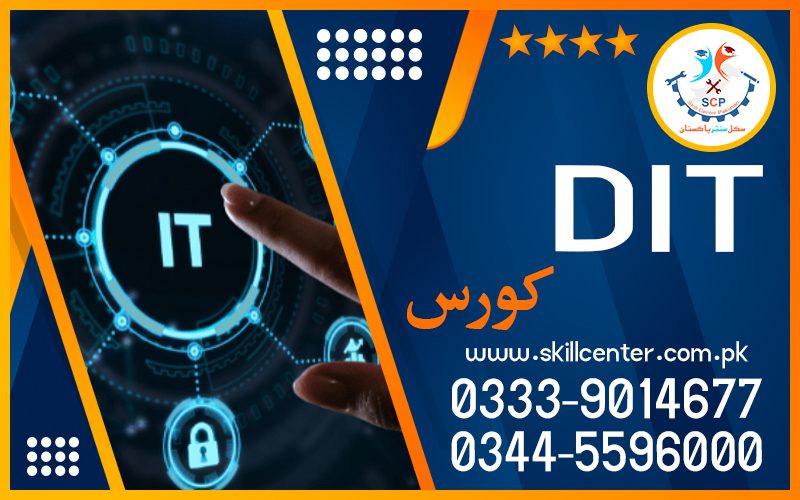

DIT Course in Okara Sahiwal Pakistan 0333-9014677
Introduction
A Diploma in Information Technology (DIT) is a comprehensive course that provides students with the knowledge and skills necessary to work in the field of Information Technology. This course covers the basics of hardware, software, and computer networks, as well as programming languages and database management. The course is designed to equip students with the skills needed to design, develop, implement, and maintain IT systems and applications.
A DIT course will generally cover the following subjects:
- Computer Fundamentals: Understanding the basics of computer hardware, software, operating systems, and the internet.
- Programming Languages: Learning popular programming languages such as Java, C++, Python, and PHP. Students will learn how to write, compile, and execute basic programs.
- Web Development: Understanding web design and development concepts, including HTML, CSS, JavaScript, and popular frameworks such as React, Angular, and Vue. Students will learn how to create responsive websites and web applications.
- Database Management: Learning how to design, develop and manage databases using SQL and popular database management systems such as MySQL and Oracle.
- Networking and Security: Understanding computer networks, including how to configure, troubleshoot and secure them. Students will also learn about security threats and how to mitigate them.
- Operating Systems: Learning how to install, configure and troubleshoot operating systems such as Windows and Linux. Students will also learn how to manage file systems and device drivers.
- Mobile Application Development: Understanding the basics of mobile application development, including Android and iOS platforms, and developing basic applications.
- Project Management: Learning how to manage IT projects from planning to implementation, including project scope, budget, and schedule management.
With a combination of lectures, lab work, and project work, students will have the chance to advance their technical abilities throughout the course. The goal of the course is to provide students with hands-on experience in planning, creating, and deploying IT systems and applications. To succeed in the IT business, students will also have the chance to hone their problem-solving and critical-thinking abilities. Students who complete the course will have the knowledge and abilities needed to seek a job in the IT sector. In addition to other positions, they will be able to work as programmers, database administrators, network administrators, and web developers. Students leave the course with a strong foundation in IT that they may expand upon by taking further courses.
A diploma in information technology is a great option for anyone who wishes to work in the IT sector, to sum up. Students who complete the course will have a thorough grasp of the IT industry because of the variety of topics it covers. It is intended to provide students with the know-how and expertise needed to create and maintain IT systems and applications as well as give them hands-on experience with technology. After completing the course, students will be prepared to pursue a variety of IT-related occupations as well as further their education and career development.
Diploma in Information Technology (DIT) Training Course Outline
Here are some potential MS Office, graphic design, and web design and development course outlines:Introduction to MS Office
- Overview of Microsoft Office suite
- Navigating the Microsoft Office ribbon and interface
Microsoft Word
- Creating, formatting, and editing text documents
- Using templates and styles to create professional-looking documents
- Inserting tables, images, and other multimedia elements
- Collaborating with others using Word’s co-authoring and reviewing features
Microsoft Excel
- Creating and formatting spreadsheets
- Doing calculations using formulae and functions.
- Making graphs and charts to represent data
- Using Excel’s data analysis tools to gain insights from the data
Microsoft PowerPoint
- Creating and formatting presentations
- Using themes and templates to create professional-looking presentations
- Adding multimedia elements such as images, videos, and sound
- Delivering presentations and using presentation tools such as transitions and animations
Introduction to Graphic Design
- Understanding the elements of design and principles of composition
- Exploring the history of graphic design and its impact on contemporary design
- Learning about design software tools and their uses
Adobe Photoshop
- Introduction to the Photoshop interface and tools
- Working with layers and masks
- Using selection tools to isolate and manipulate image elements
- Using filters and effects to enhance images
Adobe Illustrator
- Introduction to the Illustrator interface and tools
- Creating vector graphics and illustrations
- Using typography and color to create effective designs
- Exporting graphics for use in print or digital media
Introduction to Web Design
- Understanding the basics of web design, including HTML, CSS, and JavaScript
- Learning about web design principles, including user experience (UX) and user interface (UI) design
- Understanding web development tools and technologies, including content management systems (CMS)
HTML & CSS
- Introduction to HTML and CSS
- Creating and styling web pages
- Building responsive web pages that work across different devices and screen sizes
JavaScript
- Introduction to JavaScript
- Using JavaScript to add interactivity to web pages
- Understanding how JavaScript can be used to build dynamic web applications
Content Management Systems (CMS)
- Introduction to CMS, including WordPress and Drupal
- Creating and managing websites using a CMS
- Understanding how to use themes and plugins to extend the functionality of a website
Course Duration: 3 MONTH
Total Fee: 35,000/-
DIT Course in Okara Sahiwal Pakistan 0333-9014677
DIT Course in Okara Sahiwal Pakistan 0333-9014677
DIT Course in Okara Sahiwal Pakistan 0333-9014677
DIT Course in Okara Sahiwal Pakistan 0333-9014677
DIT Course in Okara Sahiwal Pakistan DIT Course in Okara Sahiwal Pakistan DIT Course in Okara Sahiwal Pakistan